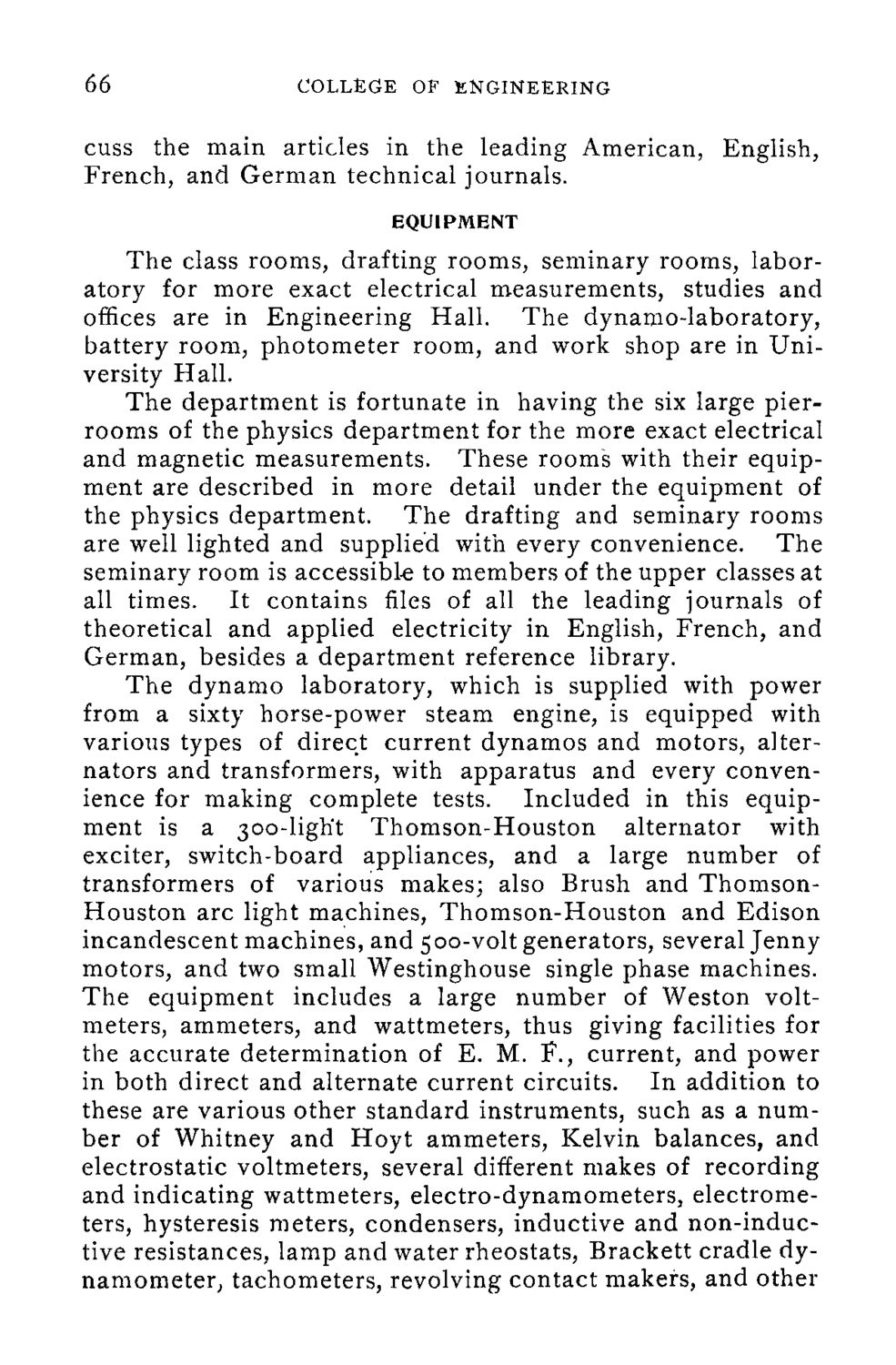| |
| |
Caption: Course Catalog - 1896-1897
This is a reduced-resolution page image for fast online browsing.

EXTRACTED TEXT FROM PAGE:
66 COLLEGE OF ENGINEERING cuss the main articles in the leading American, English, French, and German technical journals. EQUIPMENT The class rooms, drafting rooms, seminary rooms, laboratory for more exact electrical measurements, studies and offices are in Engineering Hall. The dynamo-laboratory, battery room, photometer room, and work shop are in University Hall. The department is fortunate in having the six large pierrooms of the physics department for the more exact electrical and magnetic measurements. These rooms with their equipment are described in more detail under the equipment of the physics department. The drafting and seminary rooms are well lighted and supplied with every convenience. The seminary room is accessible to members of the upper classes at all times. It contains files of all the leading journals of theoretical and applied electricity in English, French, and German, besides a department reference library. The dynamo laboratory, which is supplied with power from a sixty horse-power steam engine, is equipped with various types of direct current dynamos and motors, alternators and transformers, with apparatus and every convenience for making complete tests. Included in this equipment is a 300-ligKt Thomson-Houston alternator with exciter, switch-board appliances, and a large number of transformers of various makes; also Brush and ThomsonHouston arc light machines, Thomson-Houston and Edison incandescent machines, and 500-volt generators, several Jenny motors, and two small Westinghouse single phase machines. The equipment includes a large number of Weston voltmeters, ammeters, and wattmeters, thus giving facilities for the accurate determination of E. M. F., current, and power in both direct and alternate current circuits. In addition to these are various other standard instruments, such as a number of Whitney and Hoyt ammeters, Kelvin balances, and electrostatic voltmeters, several different makes of recording and indicating wattmeters, electro-dynamometers, electrometers, hysteresis meters, condensers, inductive and non-inductive resistances, lamp and water rheostats, Brackett cradle dynamometer, tachometers, revolving contact makers, and other
| |